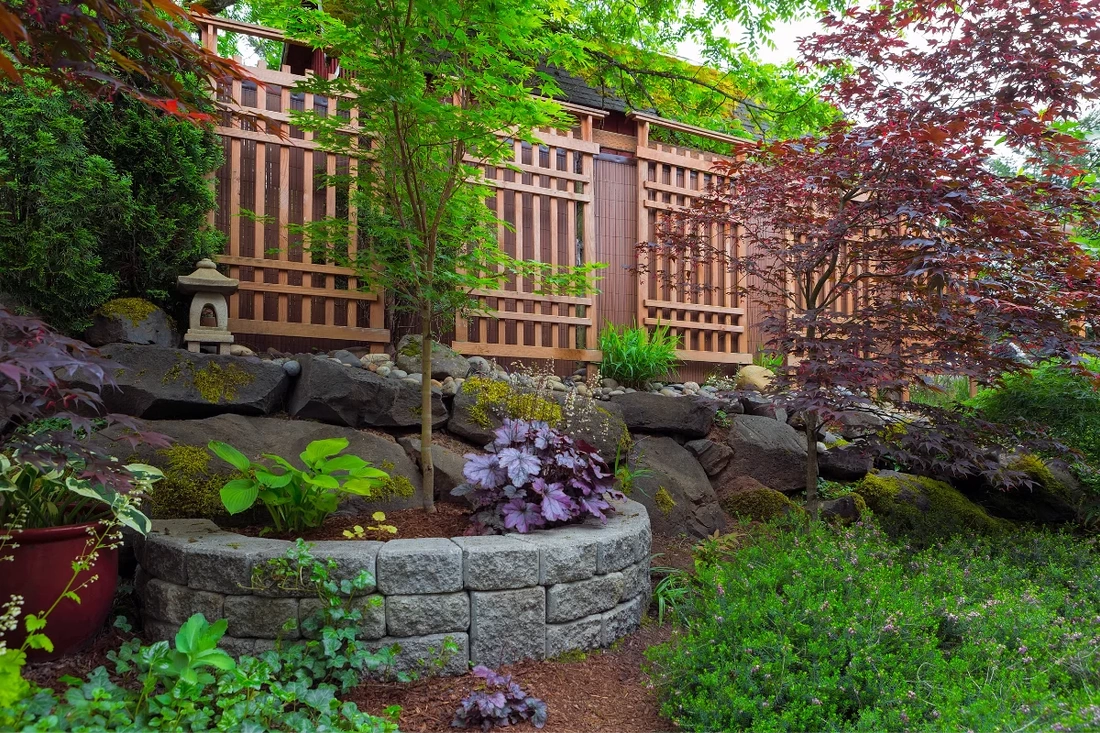AuthorWrite something about yourself. No need to be fancy, just an overview. ArchivesCategories |
Back to Blog
Creating a harmonious hardscape and softscape balance in your landscape design is essential for achieving an aesthetically pleasing and functional outdoor space. This blog post delves into the key differences between hardscape elements like pathways and retaining walls and softscape features like flowering perennials or ornamental grasses. Understanding these distinctions will allow you to incorporate both elements into your yard effectively, resulting in a cohesive landscape that offers visual interest while meeting your practical needs. We'll discuss how to balance hardscapes and softscapes by mixing materials, considering scale and proportion, and incorporating focal points with hardscape features. In addition to general tips on achieving hardscape softscape balance, we'll explore specific strategies for enhancing small yards through raised planters, vertical container gardens, and intelligent design choices by landscape designers that maximize available space. Understanding Hardscape and SoftscapeIt is crucial to achieve a hardscape softscape balance and to find balance in various elements in landscape design for a functional and aesthetically pleasing outdoor space. The two primary components of landscaping are hardscape and softscape. Hardscape includes concrete, bricks, and stone, while softscape encompasses living elements such as perennial flowers, shrubs, succulents, and trees. By combining these features in your yard's design with the help of professional landscape designers like Valley Retaining Walls of Abbotsford, you can create an inviting atmosphere that suits your preferences. Key Features of HardscapingHardscaping refers to the non-living elements in your yard that provide structure and functionality. These features often include pathways made from brick or stone pavers, retaining walls built with natural stones or concrete blocks, and patios using wood decking or flagstone slabs. Hardscape elements like water features such as fountains or ponds can also create a relaxing environment.
Hardscaping is a great way to add structure and texture to any outdoor space. At the same time, soft-scaping elements such as flowering perennials, ornamental grasses, and trees can help create an inviting atmosphere. With the right balance of hardscape and softscape features, you can design an attractive landscape that meets your needs. Benefits of Incorporating Softscaping ElementsSoftscaping involves adding living plants into your landscape design, contributing color and texture variation, and providing habitat support for local wildlife populations such as birds, insects, and pollinators. Some common examples include:
Incorporating soft-scaping elements offers various benefits, such as flowering perennials, ornamental grasses, and trees for shade. Achieving a balance between hardscape and softscape is essential to create an aesthetically pleasing landscape design; this includes mixing materials, considering scale and proportion in the design, and incorporating focal points with hardscape features. Achieving Balance Between Hardscape & SoftscapeCreating a harmonious and inviting outdoor space requires striking the right hardscape soft scape balance between hardscape and softscape features. A well-designed yard should neither be overpowered by one nor the other, as too much softscape can appear unkempt, while excessive hardscaping may feel unwelcoming. Here are some tips to help you achieve this equilibrium:
By carefully considering the scale and proportion of each hardscape feature and mixing materials for visual interest, you can achieve a balanced design between hardscapes and softscapes. To further enhance small yards with these elements, consider using raised planters to add height or create vertical interest through container gardens. Enhancing Small Yards with Hardscape & SoftscapeEven small yards can benefit from the thoughtful integration of hardscaping and softscaping elements. Combining these features allows you to maximize functionality while maintaining an attractive landscape design.
Need assistance with hardscape/softscape installation?Understanding the difference between hardscape and softscape is crucial in creating a well-balanced outdoor space. Hardscaping elements like pathways, retaining walls, and patios provide structure, while soft-scaping features such as flowering perennials, ornamental grasses, and trees add color and texture. Achieving a hardscape soft scape balance between these elements involves mixing materials for visual interest, considering scale and proportion in design, and incorporating focal points with hardscape features. If you have a small yard or limited outdoor space, utilizing raised planters for added height or creating vertical interest with container gardens can help enhance your overall design. By keeping the principles of hardscape soft scape balance in mind when designing your outdoor space, you can create a functional and aesthetically pleasing inviting environment. o learn more about the differences between hardscape and softscape elements or to get started on your project today, contact professional landscape designers through Valley Retaining Walls of Abbotsford.
0 Comments
Read More
|
About Company
Valley Retaining Walls is an established construction company that builds custom retaining walls in Abbotsford, Chilliwack, Mission, Maple Ridge and throughout the Fraser Valley. Call us today for a free quote!
|
Navigation
|
Contact Us
Phone:
604-706-1374 |
Working Hours
Monday - Friday:
8:30 AM - 5:00 PM Saturday - Sunday:
Closed |

 RSS Feed
RSS Feed

